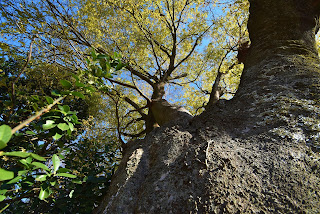Podocarpus is a tree that grows in the seaside of the forest. Has a similar atmosphere to the pine, are pruned in the same way as pine, it may become the leading role of the garden.
 |
| Trim as a plurality of balls are arranged at random |
The leaves are wider than the pine, since the density of the leaves is high, are pruned in a square, it is also often used as a hedge. For strong sea breeze, the seaside town, is also effective as a windbreak.
 |
| If the old fence, It's very solid, people can be on it |
In the same way as Japanese umbrella pine , it has been named "Maki"in Japanese, but it is totally different. In Japan, in order to indicate that the quality is inferior, we use the word "dog (Inu)" as a prefix. Podocarpus are considered inferior in appearance than Japanese umbrella pine , it has been referred to as the "Inu-maki".
 |
| Fruits of Podocarpus |
However, fruits of Japanese umbrella pine is pine cones. It is hard to eat them, but the fruits of Podocarpus are edible. Two-color fruit of that ripen in autumn, is a strange shape, but the red part is sweet and delicious.
Unfortunately, in the case of the fence, too pruned, you can not find this treat, to look for abandoned Podocarpus, you'll be able to eat it.
 |
| Podocarpus in wild style |


















































